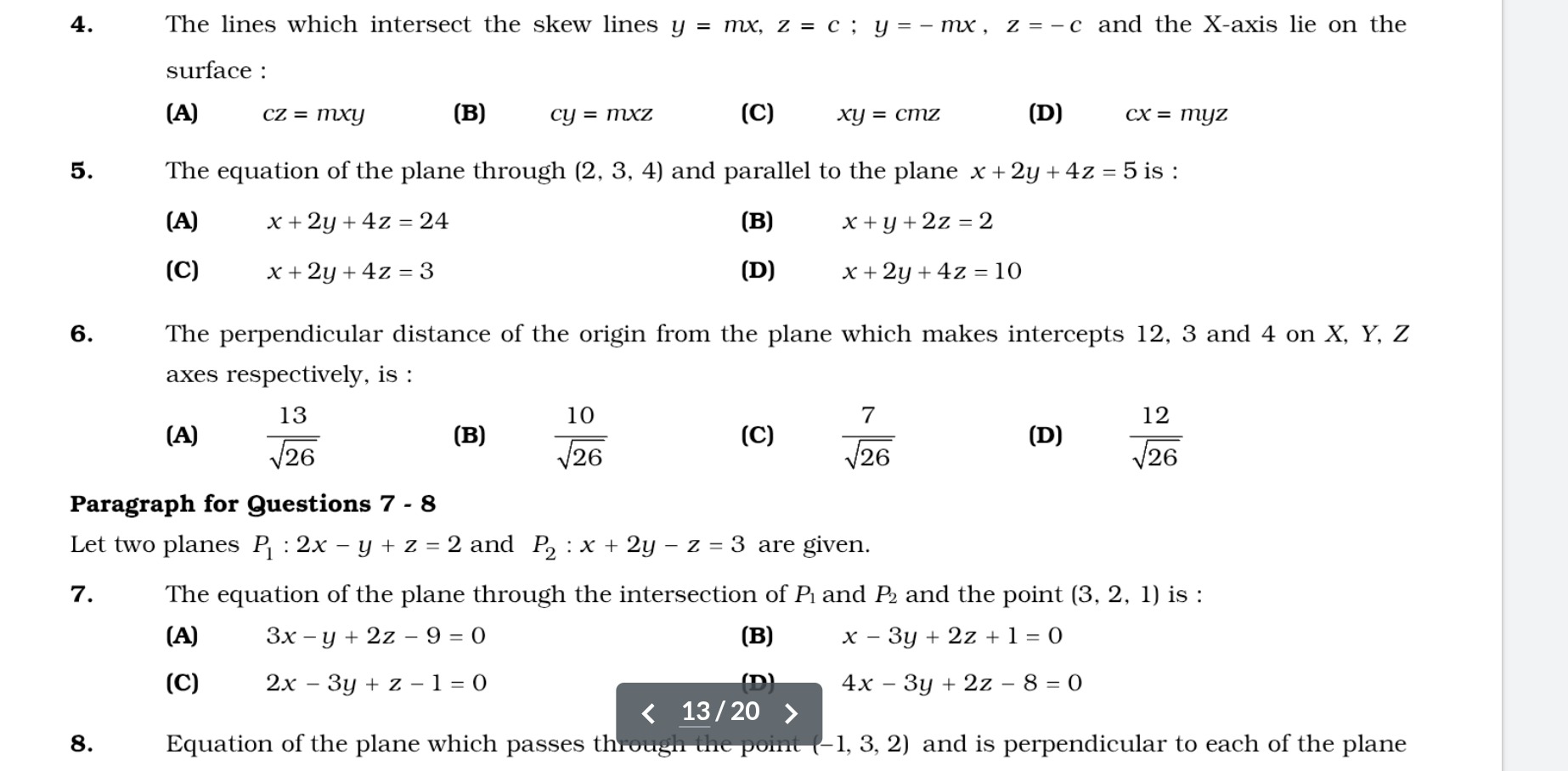Question
Question: The lines which intersect the skew lines $y = mx, z = c; y = -mx, z = -c$ and the X-axis lie on the ...
The lines which intersect the skew lines y=mx,z=c;y=−mx,z=−c and the X-axis lie on the surface :

cz = mxy
cy = mxz
xy = cmz
cx = myz
cy = mxz
Solution
The two given skew lines are L1:y=mx,z=c and L2:y=−mx,z=−c. The X-axis is given by y=0,z=0. Let a transversal line intersect L1 at P1(t1,mt1,c), L2 at P2(t2,−mt2,−c), and the X-axis at PX(tX,0,0). For these three points to be collinear, the vectors P2−P1 and PX−P1 must be parallel. P2−P1=(t2−t1,−m(t1+t2),−2c) PX−P1=(tX−t1,−mt1,−c) The condition for parallelism is: tX−t1t2−t1=−mt1−m(t1+t2)=−c−2c From −c−2c=2 (assuming c=0), and −mt1−m(t1+t2)=2 (assuming m=0), we get t1t1+t2=2, which implies t2=t1. Then, tX−t1t2−t1=2 becomes tX−t10=2, so tX−t1=0, which means tX=t1. Thus, t1=t2=tX=t. The points of intersection are P1(t,mt,c), P2(t,−mt,−c), and PX(t,0,0). A general point (x,y,z) on the transversal line passing through these points can be parameterized. For instance, the line through PX(t,0,0) and P1(t,mt,c) has direction vector (0,mt,c). The parametric equation is (x,y,z)=(t,0,0)+λ(0,mt,c)=(t,λmt,λc). This gives x=t, y=λmt, z=λc. Substituting t=x and λ=z/c (assuming c=0) into y=λmt, we get y=(z/c)mx, which rearranges to cy=mxz. This is the equation of the surface.
